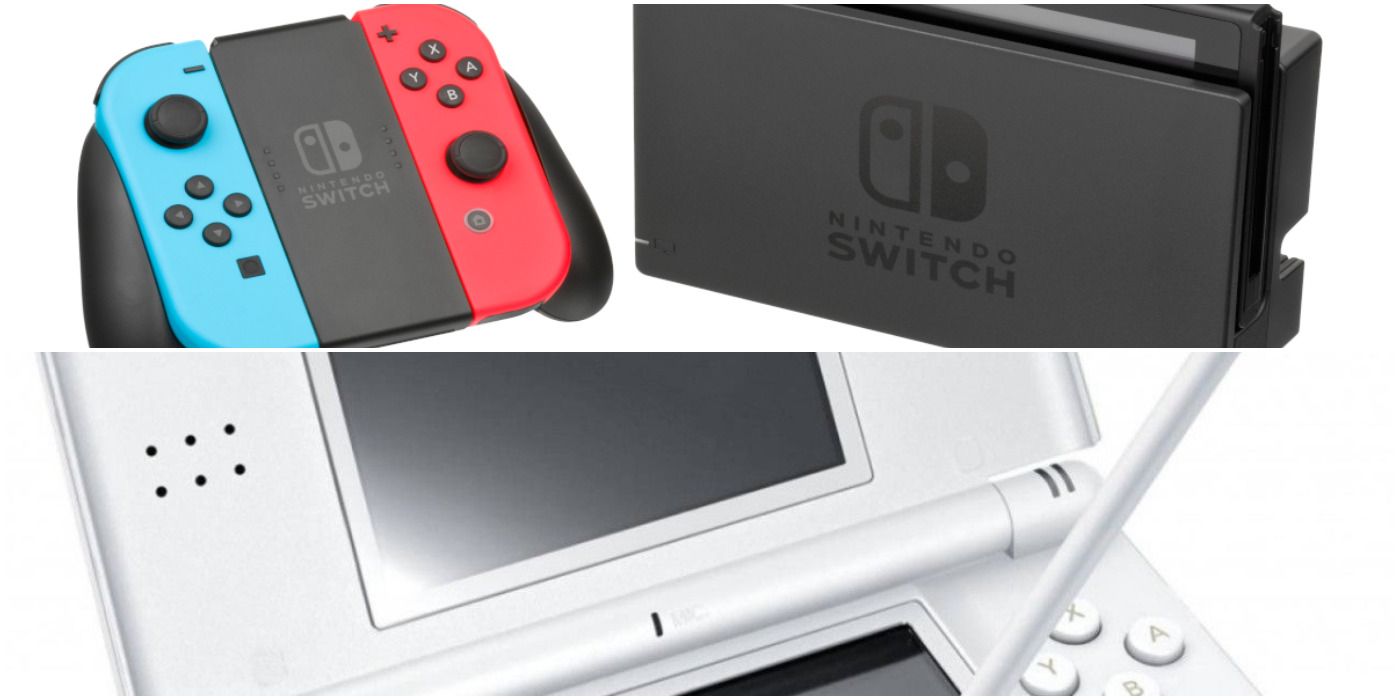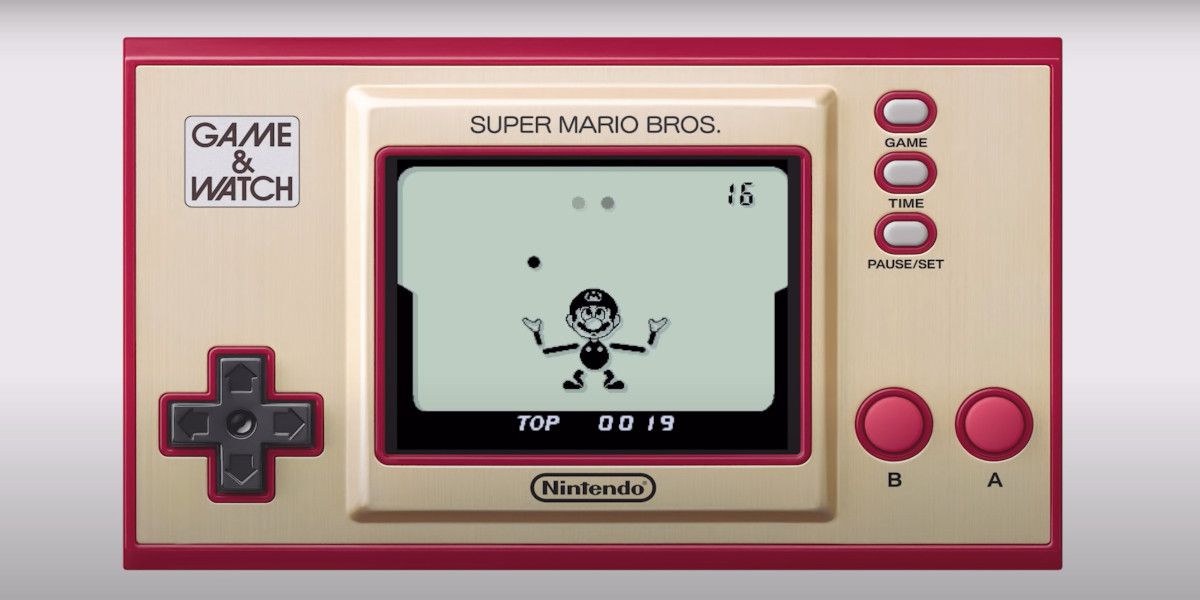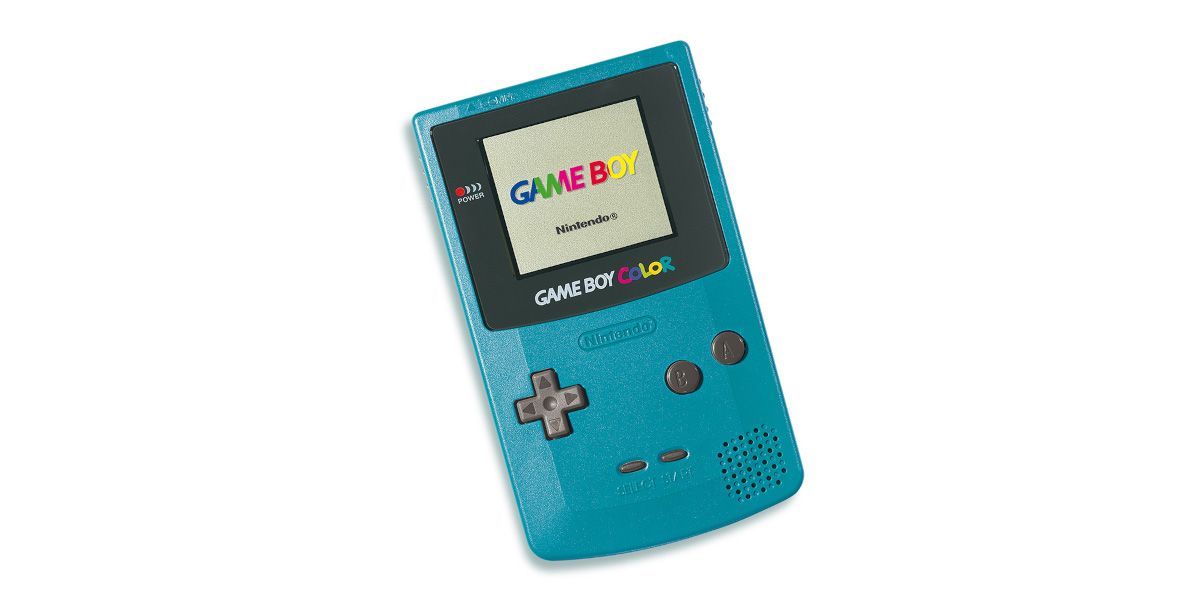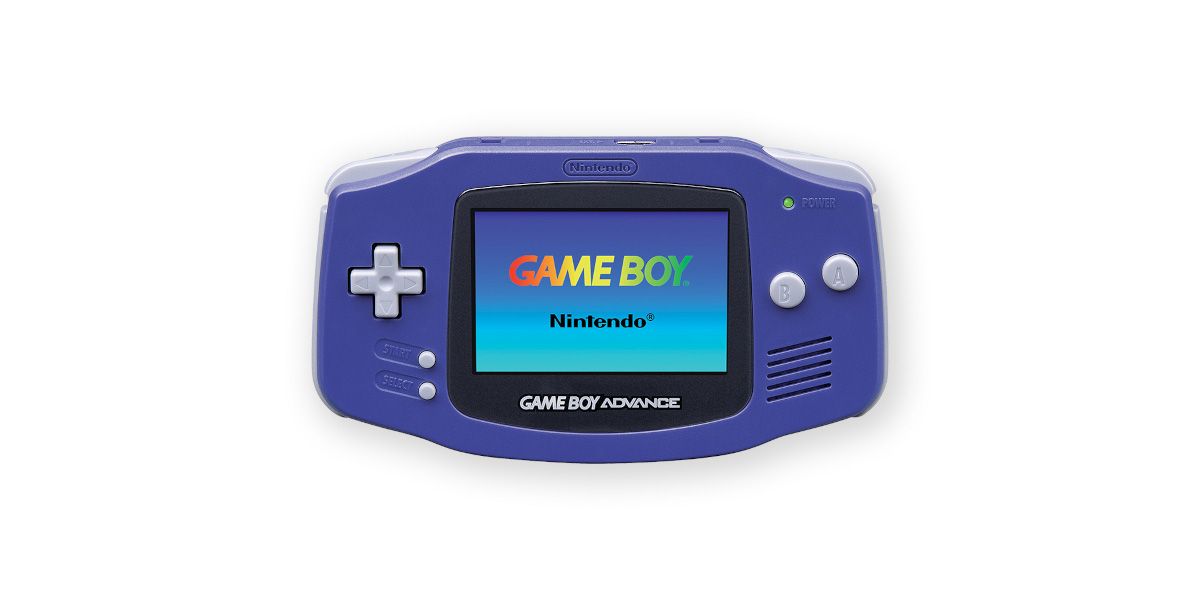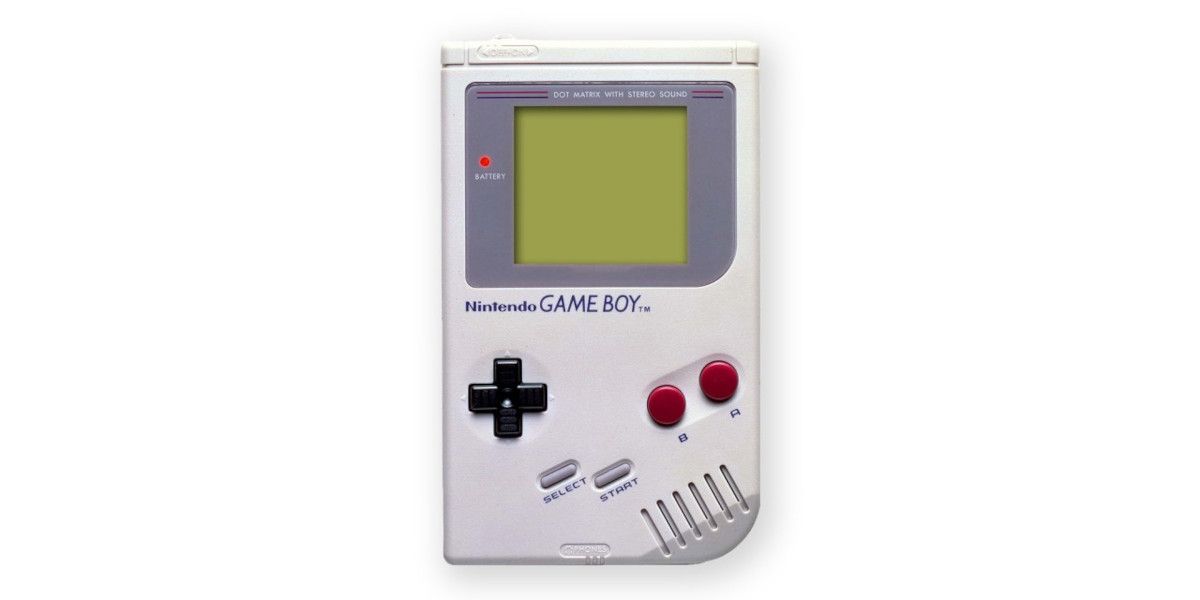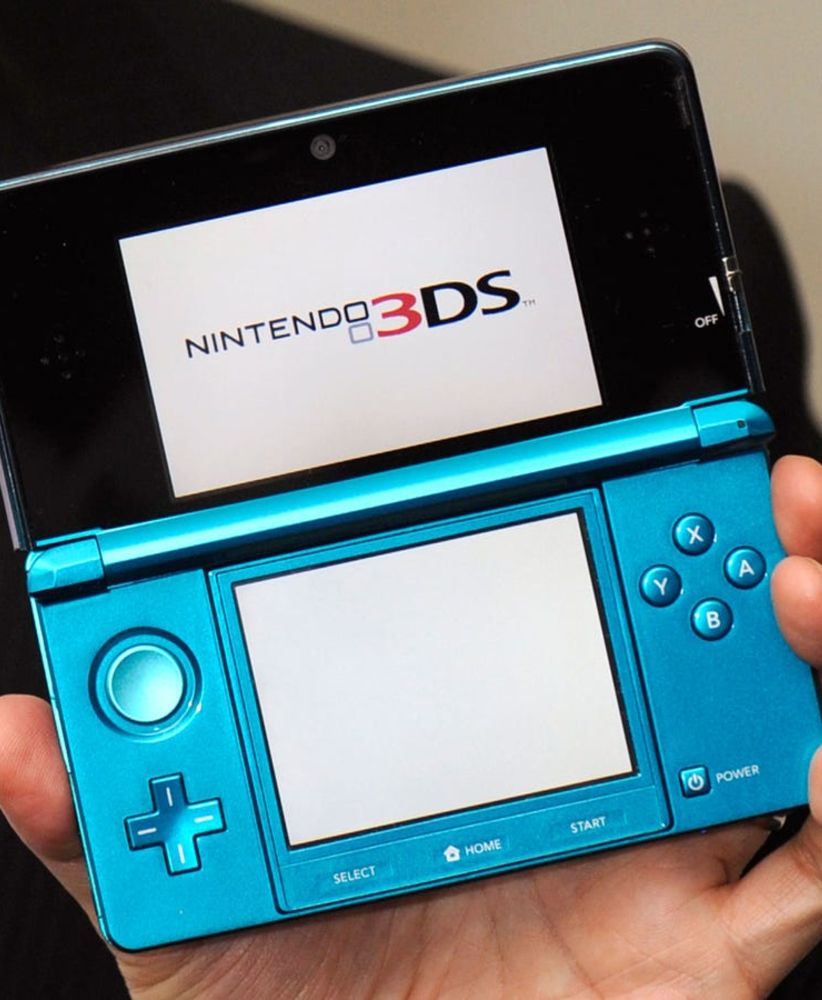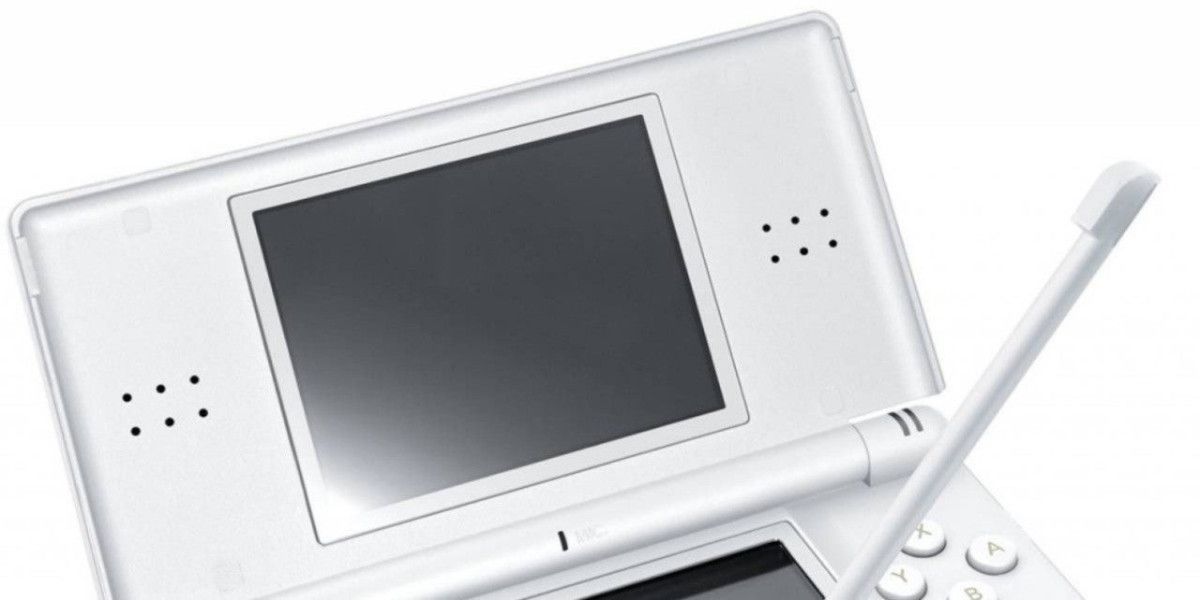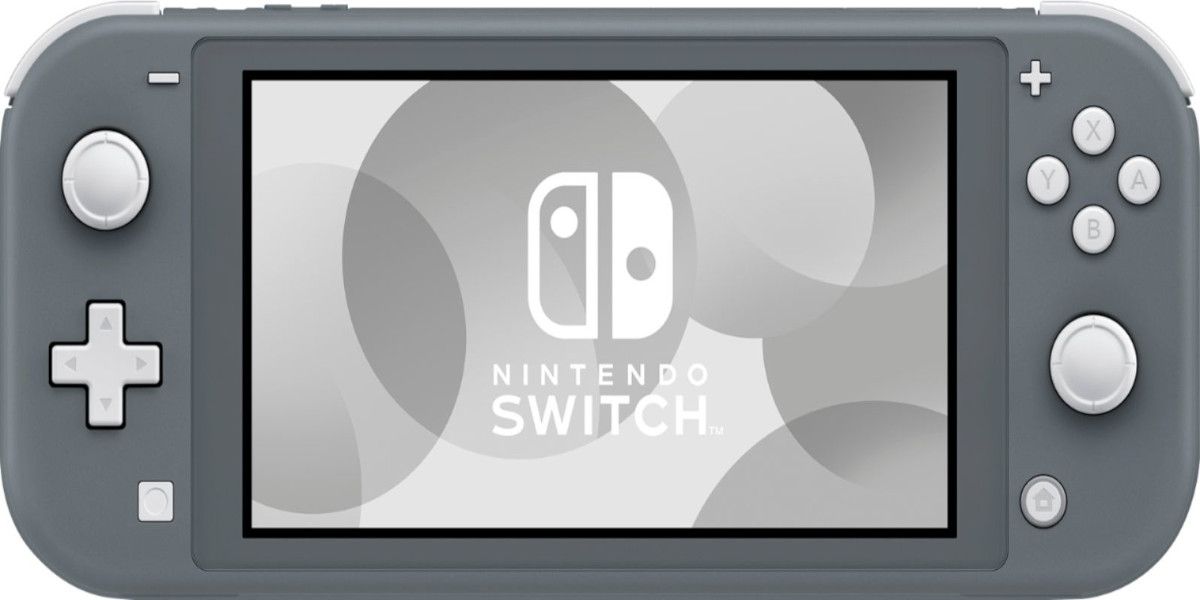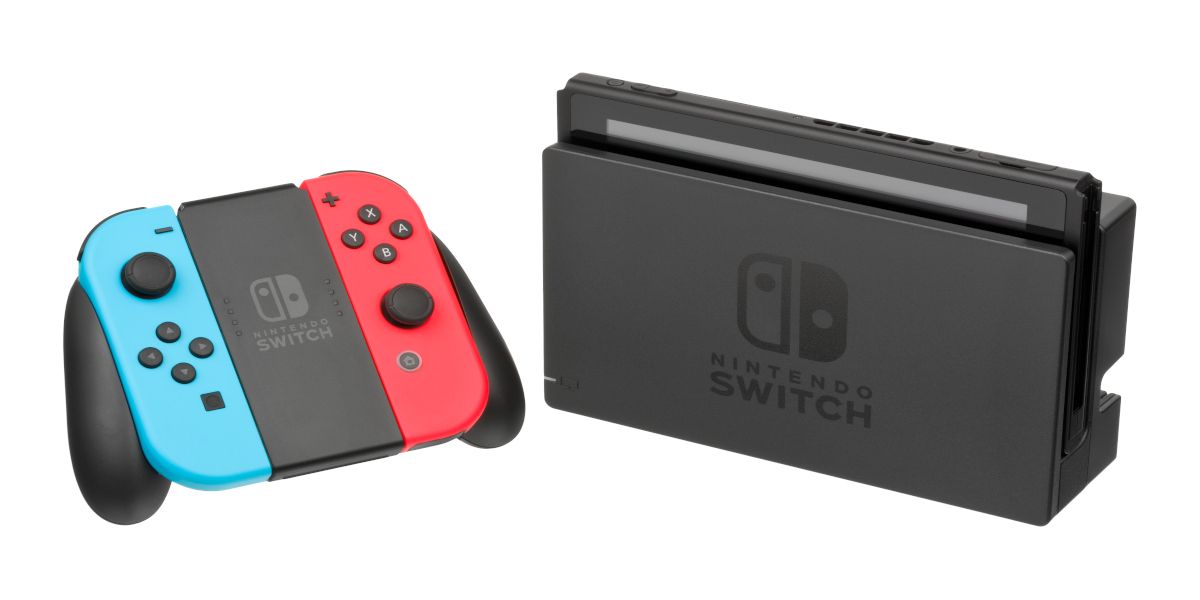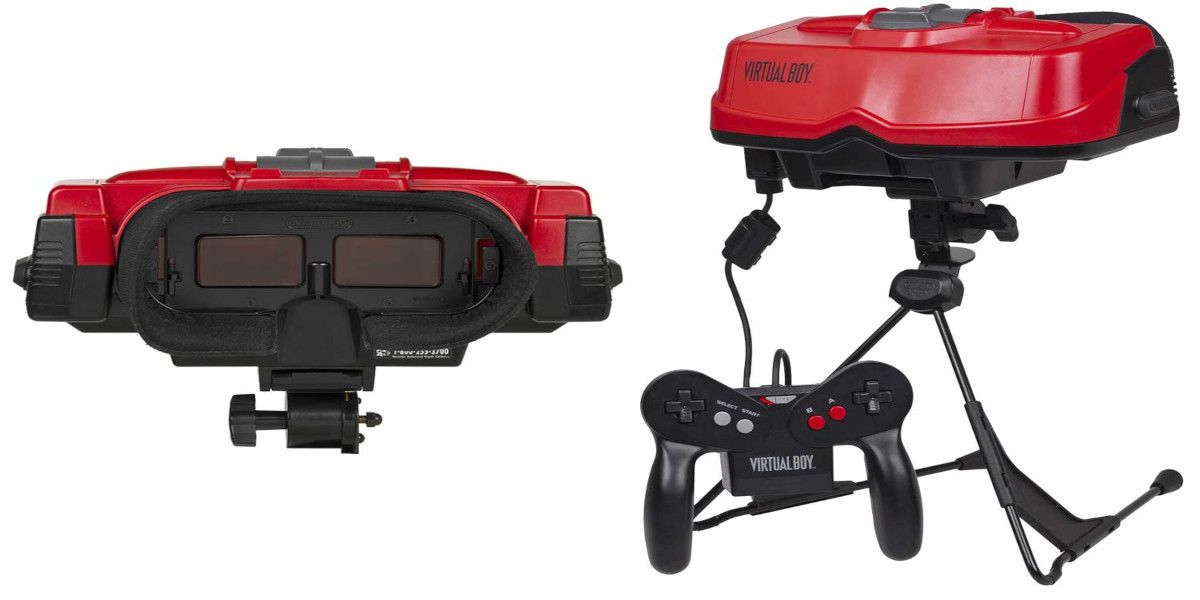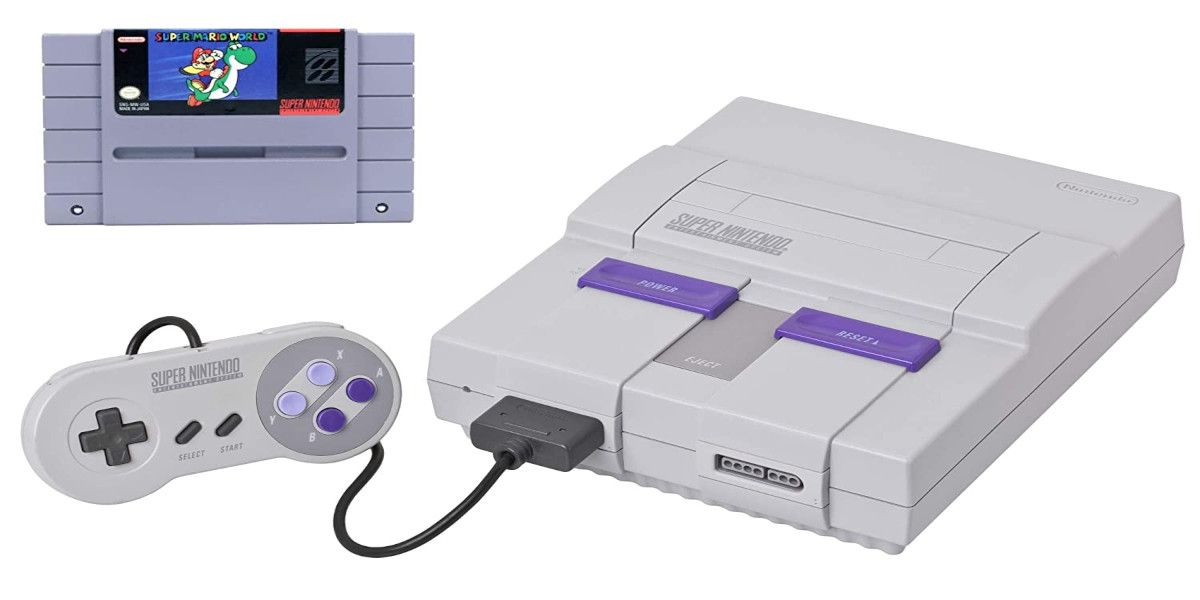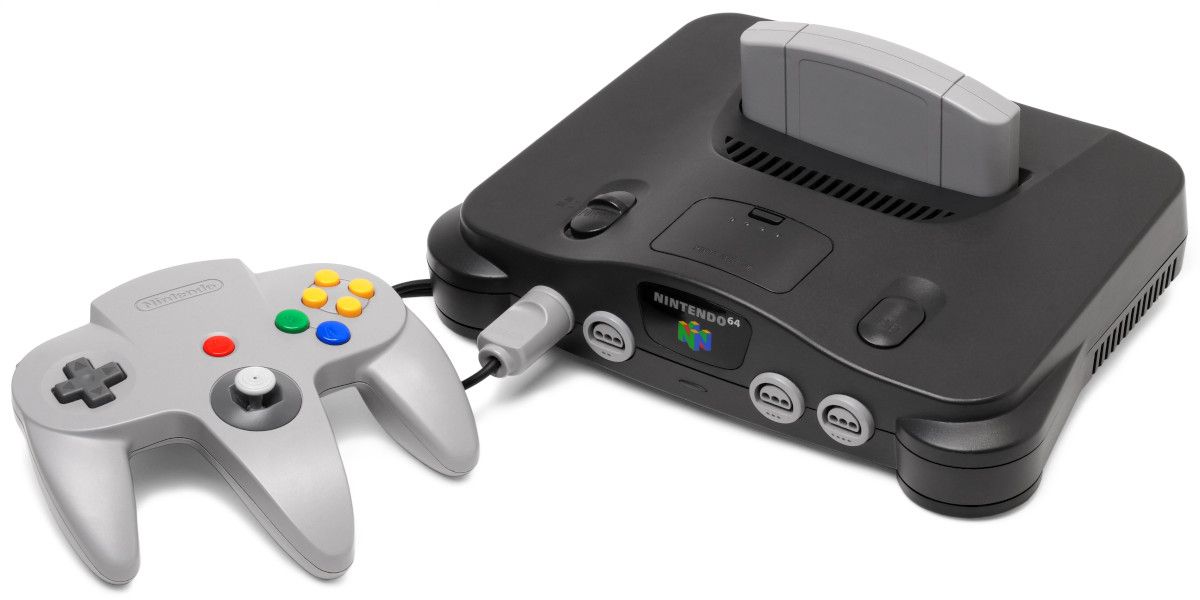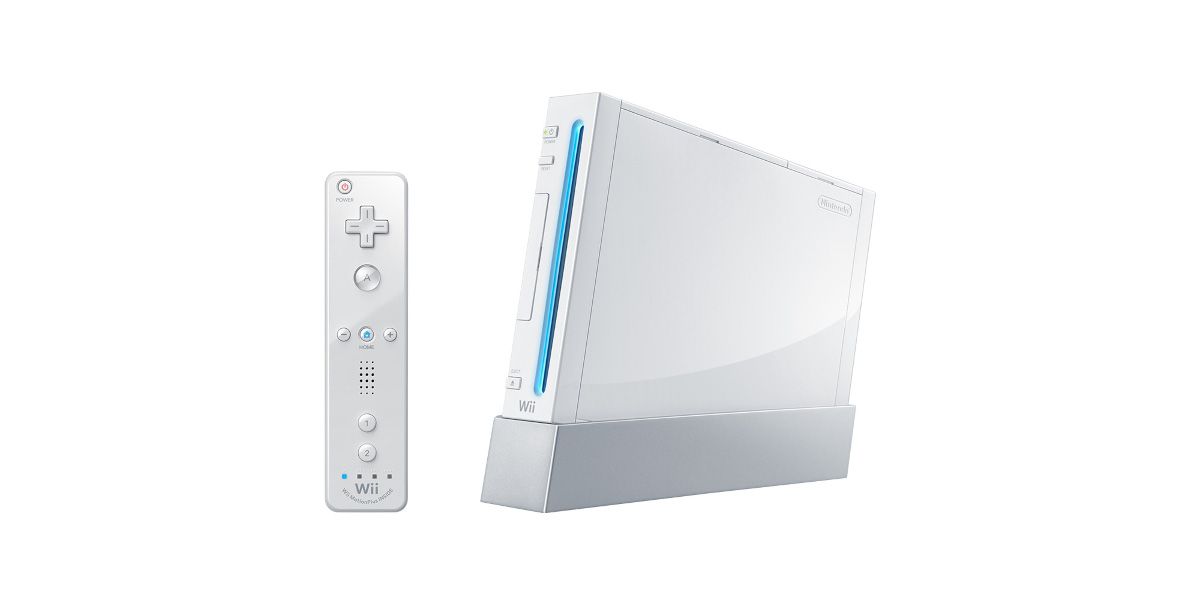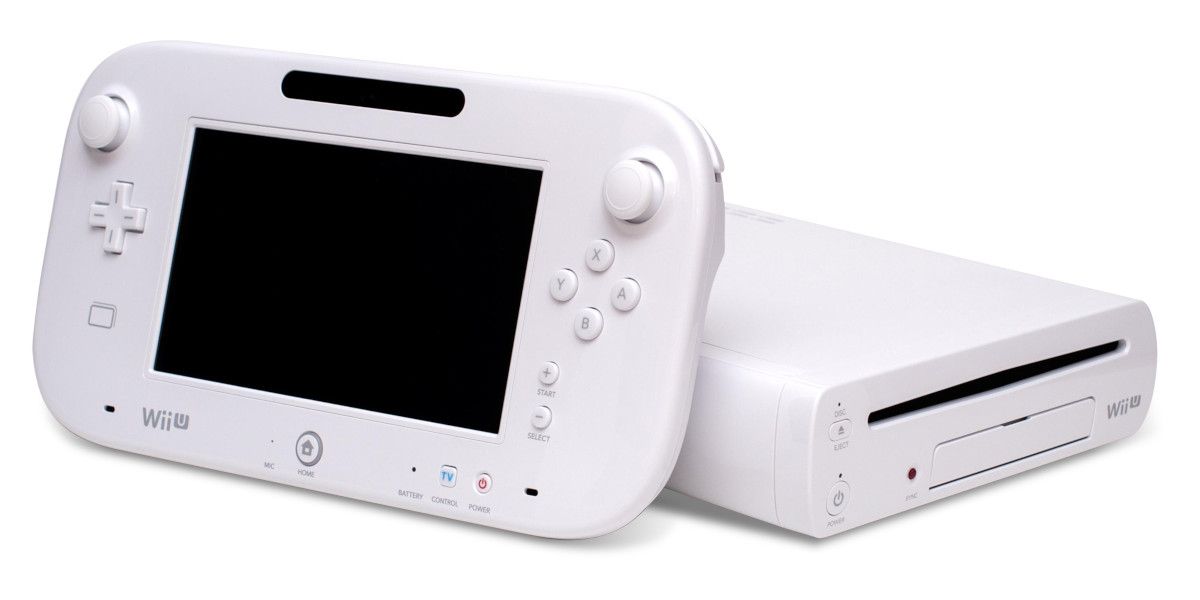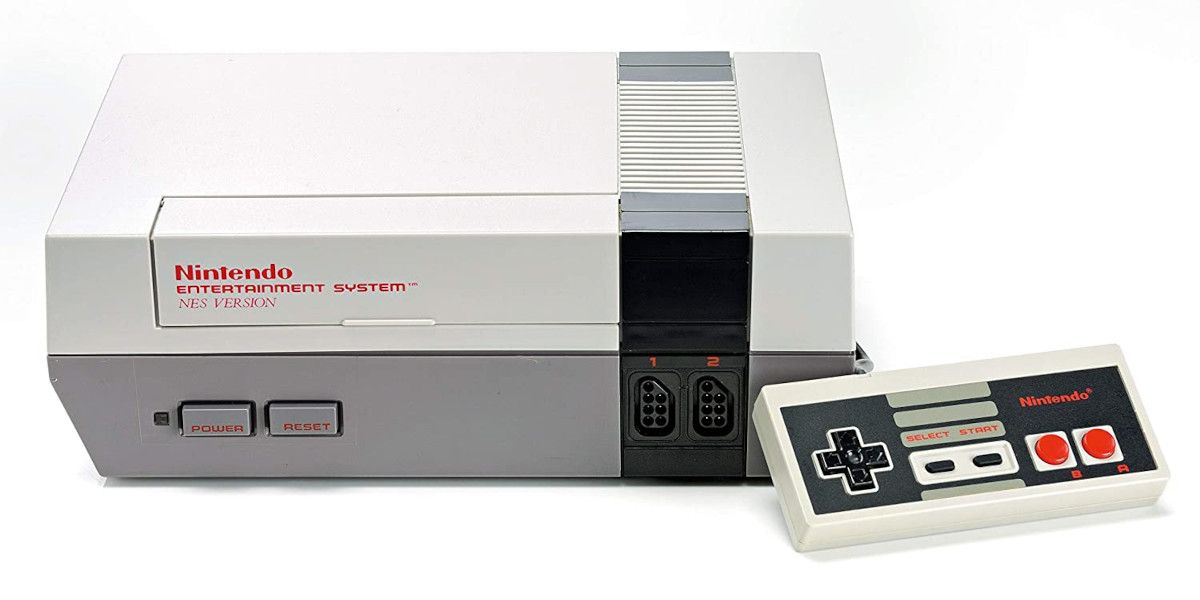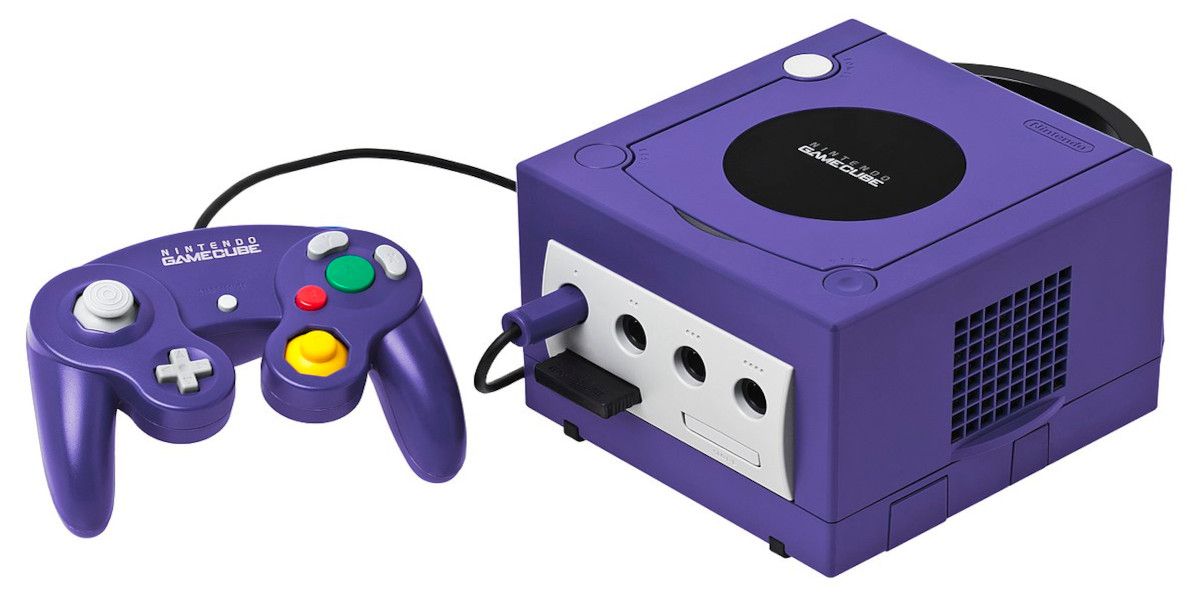Choosing the "best" Nintendo console is a subjective choice, but what if we went in a different direction? Instead of ranking how to feel about the Japanese video game giant's history, it's time to attach something much more tangible: how much they weigh. That right, it's time to set nostalgia aside for an objective, albeit cheeky concept.
Weight matters more or less for the consoles below. No one enjoyed trying to travel with the Virtual Boy if anyone was unfortunate enough to try. While the weight of most consoles never changed anyone's mind, the low weight of the original Game Boy blew just as many minds on release as it does today.
15 Game & Watch Series
The lightest Nintendo device weighs .07 kg (.15 lb), and it's also the company's first handheld. The Game & Watch brand launched in 1980 and sold 43.4 million units until it ceased production in 1991.
The product got its name from game designer Gunpei Yokoi because it included both a watch and a game on its LCD screen. After generations of making playing cards, this breakout hit set the Japanese company on its trailblazing path.
14 Game Boy Color
The Game Boy Color weighs .14 kg (.30 lb), and it launched in Japan in October 1998 as part of the fifth generation of consoles. Nintendo made the handheld until March 2003 and sold 118 million units of this and the original.
Its most popular game (Pokemon Gold and Silver) sold over 23 million units around the world. While you still wouldn't want to play this one in a dimly lit room, this device helped the handheld market leap toward the new millennium.
13 Game Boy Advance
The Game Boy Advance also weighs .14 kg (.30 lb), and it launched in Japan in March 2001. Nintendo made the handheld until 2010 in North America and sold over 81 million units.
The GBA didn't enjoy the same sales as its predecessor because it came at a hefty price with some questionable design choices by its engineers. However, that doesn't mean it doesn't have its fair share of hidden gems for retro game collectors.
12 Game Boy
The original Game Boy weighs .22 kg (.49 lb), and it launched in Japan in April 1989. Nintendo drained this stone until it reached the last drop of blood in March 2003.
While it's not the video game giant's first handheld, it proved that a portable gaming system could not only thrive but smash previous records. The Game Boy is the proof of concept for an entire industry today.
11 Nintendo 3DS
The 3DS weighs 23 kg (.51 lb), and it launched in Japan in February 2011. After its big unveiling at E3 2010, Nintendo made the handheld until 2020 and sold 75.77 million units.
While it's a solid console with many merits and a fantastic collection of limited edition designs, the novelty of the 3D effect didn't wow enough people to convince them the price of entry was worth the hard-earned cash. When Nintendo manages to create a handheld device that displays 3D images for the naked eye, people will look back fondly at this device.
10 Nintendo DS
The DS weighs .28 kg (.61 lb), and it launched first in North America in November 2004. Nintendo made the handheld through 2013 and sold a staggering 154 million units.
While most would have written off handheld consoles entirely before its release, the Japanese company proved once again that it fills a need people didn't know they had before they introduced a new product. A new generation of people, both young and old, rediscovered the joy of quality mobile gaming with this device.
9 Nintendo Switch Lite
The Nintendo Switch lite weighs a breezy .28 kg (.61 lb, and it launched in September 2019. While it hasn't enjoyed the same success as the original, it sold 10.37 million units by September 2020.
A cheaper version of the handheld that doesn't dock paid off for Nintendo during the last couple of holiday seasons. While it's a transition device between console generations, it meets the right need as long as the games you want to play are compatible.
8 Nintendo Switch
The Switch weighs .29 kg (.66 lb), and it launched in most of the world in March 2017. Speculation swirls in 2021 about a possible "Nintendo Switch Pro" announcement after selling over 70 million consoles around the world.
Skeptics questioned the wisdom of creating a hybrid device, but no one can deny the risk paid off big for its creator. It's hard to imagine a world where Nintendo didn't blaze its path through the last console generation with this gem of a device, and there's plenty to look forward to in 2021.
7 Virtual Boy
The Virtual Boy weighs .76 kg (1.67 lb), and it launched in Japan in July 1995. This infamous flop of a "handheld" console thankfully ceased production the following year.
Nintendo is known for releasing products ahead of their time, but this black sheep of the family arrived long before the technology was ready. The Virtual Boy was a rare misstep for a company that takes pride in its quality control.
6 Super Nintendo Entertainment System
The Super Nintendo Entertainment System weighs .96 kg (2.12 lbs), and it first launched in Japan in November 1990. Nintendo competed with Sega with this beloved console from the 16-bit era to the 32-bit generation.
The SNES sold nearly 100 million units before its discontinuation in 2003. While the NES changed the video game landscape forever, this console managed to dominate its competitors and make everyone miss the 90s even more.
5 Nintendo 64
The Nintendo 64 weighs 1.09 kg (2.42 lb), and it launched first in Japan in June 1996. It sold 32.93 million units worldwide before its discontinuation in 2002.
Nintendo's first 3D console didn't perform nearly as well as its Sony counterpart, but it remains a historic and beloved piece of video game history nonetheless. The stubborn refusal to move past cartridges cost the beloved video game company and this console suffered because of that choice.
4 Wii
The Wii weighs 1.2 kg (2.7 lb), and it launched first in North America in November 2006. Nintendo discontinued the massively successful home console with 101.63 million units sold.
The video game giant proved that its insistence on doing things their way pays off in the end, even if they may not compete as well with its last generation of innovations. The Wii catapulted Nintendo back into home video game relevancy with a fun design that withstood the test of time.
3 Wii U
The Wii U weighs 1.5 kg (3.3 lb), and it launched in North America and Europe in November 2012. While it didn't reach Virtual Boy levels of infamous notoriety, it didn't sell well at only 13.56 million units.
Nintendo largely failed to sell anyone beyond its loyal fan base on the merits of this console that deserved more love than it received. The building blocks of the Switch's success are on full display, but unable to take advantage of the opportunity.
2 Nintendo Entertainment System
The Nintendo Entertainment System weighs 2.27 kg (5 lbs), and it first launched in Japan in July 1983. The NES sold 61.9 million units, and it continued to be made until 2003 in the Land of the Rising Sun.
Nintendo proved that the previous video game crash was only an opportunity for the right company with a quality product to step up and seize the market. As Atari faded, the Nintendo Entertainment System rose out of the ashes to make an entire world fall in love with gaming.
1 GameCube
The GameCube weighs 2.4 kg (5.3 lb), and it first launched in Japan in September 2001. While it received a positive reception from critics, fans didn't get behind it as much at only 21.7 million units sold before its discontinuation in 2007.
Nintendo suffered from being too "kid-friendly" during this generation of consoles and lost out to grittier titles that took advantage of emerging technology. While the company finally moved away from cartridges, it wasn't prepared to let go of its grip on younger audiences and forgot to pay attention to its older fans.
Next:

